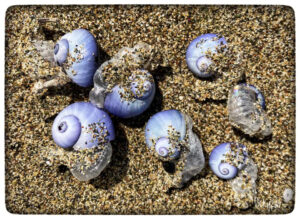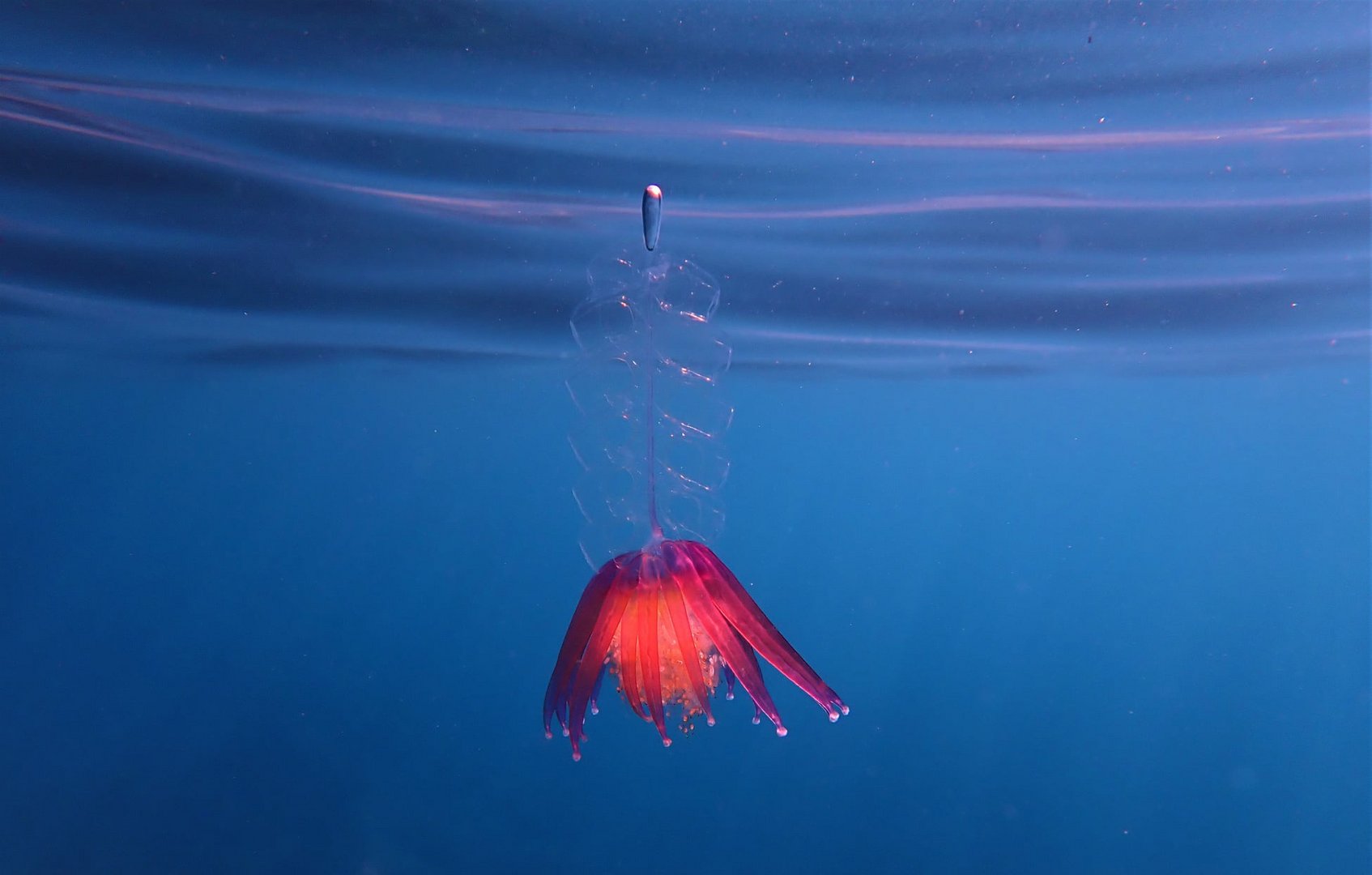Cyprus Marine Life is more than just a page of pretty pictures. This Facebook group actively protects the island’s biodiversity. ALIX NORMAN finds out more.
Here, you’ll discover which jellyfish to avoid come summer, the name of our waters’ most intriguing species, and what to do if you find a turtle stranded on the beach. You’ll also find a host of photos and videos depicting everything from the transparent beauty of the Cestum veneris to the writhing antics of the Mediterranean Moray Eel. In short, Cyprus Marine Life is a treasure trove of underwater allure. But, says founder Kostas Aristeidou, the Facebook group also has a much deeper purpose…

Janthina janthina with bubble rafts by Vicky Zavros
“When I founded the group, I was looking to celebrate the rich biodiversity of marine life in Cyprus,” says the 43-year-old. “But at the same time, I hoped to increase awareness and instigate a dialogue about the conservation of our seas. For millions of years, we’ve shared our planet with a wonderful biodiversity. But now, humans are destroying it – what will be left for the next generation?”
Kostas has always been interested in marine life and biodiversity, spending much of his youth diving, fishing and snorkelling. More recently, he’s added marine photography and freediving to the list – “I could be there for hours and hours and not even notice. I’m in my element!” And over time, he’s parlayed his passion into a career as a hydrologist with the Cyprus Water Department.
Today, his work includes the protection and study of the island’s water resources, as well as the monitoring of local water quality, ground water, ecosystems and related bio-indices. He also represents the Water Department on the Environmental Impact Committee of Cyprus. And he’s passionate about all aspects of his work: “I really love what I do,” he smiles. “And it gives me a real chance to make a difference whenever and wherever I can.”
Water, then, has always been Kostas’ first love. But it wasn’t until January 6, 2015 that he had his own quiet epiphany and launched the Marine Life Facebook group. Initially, the idea was to share his passion for protecting sealife. But the group has since expanded hugely in scope: today, it’s replete with photos and videos of fish, seashells, molluscs, seaweed and all sorts of other local marine life in their natural environment.
“We also,” he continues, “have a lot of information on related issues: the possible threats to marine life, such as sea pollution, habitat destruction, invasive species, and illegal or unsustainable fishing practices. We answer queries about injured turtles; we notify authorities about ghost nets – nets abandoned or lost in fishing, which can trap and kill dolphins, turtles, and fish; we raise awareness about vulnerable areas such as Akamas, and publicise demonstrations.

Adamantia Amanda Christodoulou
“I think we’ve also contributed to the establishment of local marine protected areas such as Cape Greco and the Peyia Sea Caves where the monk seals give birth,” he notes. “I remember there were a lot of posts when a pup died from pollution; shortly afterwards, the caves were declared a Marine Protected Area. “A lot of governing bodies and authorities monitor the site,” he continues. “And with members constantly increasing, it’s a great place for a non-judgemental exchange of ideas.”
With members from 99 countries, including the UK, the US, Greece, Turkey, Italy and Libya, the group is quickly approaching the 6,000 followers mark. And Kostas has called in help to monitor the increasing numbers of posts.
“We now have 10 moderators: marine biologists Louis Hadjioannou, Periklis Kleitou, Maria Rousou and Marina Evriviadou; biodiversity experts and wildlife photographers Matt Smith, Costas Constantinou, Pantelis Charilaou, and George Constantinou; and divers Zena Andreou and Sarah Alexander.”
The group also includes a number of biologists from the Fisheries Department and other biodiversity specialists, as well as people from various marine research institutes. Together, these experts are crucial in helping identify lesser-known species posted in photos, providing information on habitats, and sharing surveys on marine conservation efforts.
“They also further the dialogue between conservationists, divers, photographers, fishermen and those of us who just want to enjoy our island’s seas,” explains Kostas. “I often find that those who don’t dive aren’t fully aware of the size and scope of our marine biodiversity. But when they join the group and see the photos, they realise what a fragile treasure we have.”
Over the past few decades, Kostas has seen first-hand the destruction of many of the island’s marine ecosystems. “There’s been a noticeable decline in numbers and species of fish in our waters, as well as an increase in invasive species.”
But it’s not overfishing that’s the culprit, he suggests. “Fishermen often get a bad rep,” he acknowledges. “But they are conservationists in their own way: they know that overfishing certain species will destroy their livelihood, whereas sustainable fishing won’t destroy an ecosystem.”
Instead, he proposes that it’s coastal construction and climate change that are largely responsible for the decline in biodiversity. “The eastern Mediterranean is much warmer than before,” Kostas explains. “Many predatory fish that were once unable to survive the cold are now entering from the Red Sea. These invasive species disrupt already fragile ecosystems: our native red mullet has been replaced by the Red Sea goatfish; the lionfish is eating anything smaller than itself; the silver-cheeked toadfish has drastically reduced the number of octopi…”
In response, Kostas advocates both awareness and unity. “You’ll see,” he adds, “that our page title is in all three official languages of the island: Greek, Turkish, and English. And there’s a reason for that: we’re one island, sharing one marine ecosystem,” he notes. “And it’s only by working together that we can make a difference. Wherever you’re from, and whatever your interest in the sea, this group is for people who want to work WITH one another to protect the unique marine life of Cyprus.”
For more information, visit the Facebook page ‘Cyprus Marine (sea) Life – Θαλάσσια ζωή της Κύπρου – Kıbrıs deniz yaşamı’







Click here to change your cookie preferences